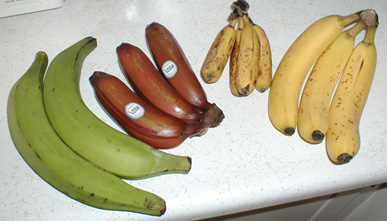1.7.1
Manipulating Ratios
Simplifying Ratios
Simplifying Ratios
A ratio a : b means that for each 'a' of one thing there are 'b' of another. For example if the ratio of boys to girls in a class is 3 : 4 that means that for every 3 boys there are 4 girls.


Reducing a ratio
Reducing a ratio
- To reduce a ratio to a simpler form divide all parts by the same number.
- It is in its simplest form if all parts are whole numbers and there are no more common factors left to divide by.


Fractions and decimals
Fractions and decimals
- If a ratio contains decimals or fractions, multiply to get rid of them before simplifying the ratio.
- If a ratio has mixed units convert both to the smaller unit and simplify.
- Then remove the units from the ratio.
Ratio Notation & Reduction
Ratio Notation & Reduction
A ratio a : b means that for each "a" of one thing there are "b" of another. For example if the ratio of boys to girls in a class is 3 : 4 that means that for every 3 boys there are 4 girls.


Reducing a ratio
Reducing a ratio
- To reduce a ratio to a simpler form divide all parts by the same number.
- It is in its simplest form if all parts are whole numbers and there are no more common factors left to divide by.


Decimals and fractions in ratios
Decimals and fractions in ratios
- If a ratio contains decimals or fractions multiply to get rid of them before simplifying the ratio.
- 2.5 : 3 is the same as 5 : 6 (multiplied both sides by 2)
Mixed unit ratios
Mixed unit ratios
- If a ratio has mixed units convert both to the smaller unit and simplify.
- Once both are using the same unit you can remove the units from the ratio.
- 4.6kg : 2300g is the same as 4600g : 2300g
- We can remove the unit and simplify to get 2:1
Part : Part Ratio
Part : Part Ratio
If three people (Amy, Bob and Cara) divide up £5400 in the ratio 2 : 3 : 4, how much money does each of them get?


Find number of parts
Find number of parts
- If three people (Amy, Bob and Cara) divide up £5400 in the ratio 2 : 3 : 4 then there are 9 parts in total.
- 2 + 3 + 4 = 9


Find value of each part and multiply
Find value of each part and multiply
- Each part is worth £5400 ÷ 9 = £600:
- Amy gets 2 × £600 = £1200
- Bob gets 3 × £600 = £1800
- Cara gets 4 × £600 = £2400


Checking
Checking
- Check the result by adding these quantities and checking it is the same as the original.
1Numbers
1.1Integers
1.3Decimals
1.4Powers & Roots
1.5Set Language & Notation
1.6Percentages
1.7Ratio & Proportion
2Equations, Formulae & Identities
2.1Algebraic Manipulation
2.2Expressions & Formulae
2.3Linear Equations
2.4Quadratic Equations
2.5Proportion
3Sequences, Functions & Graphs
3.1Sequences
3.3Graphs
3.4Common Graphs
4Geometry
4.1Angles, Lines & Triangles
4.2Polygons
4.5Circle Properties
4.6Trigonometry & Pythagoras’ theorem
4.7Mensuration of 2D Shapes
4.83D Shapes & Volume
5Vectors & Transformation Geometry
6Statistics & Probability
6.1Statistical Measures
6.2Graphical Representation of Data
Jump to other topics
1Numbers
1.1Integers
1.3Decimals
1.4Powers & Roots
1.5Set Language & Notation
1.6Percentages
1.7Ratio & Proportion
2Equations, Formulae & Identities
2.1Algebraic Manipulation
2.2Expressions & Formulae
2.3Linear Equations
2.4Quadratic Equations
2.5Proportion
3Sequences, Functions & Graphs
3.1Sequences
3.3Graphs
3.4Common Graphs
4Geometry
4.1Angles, Lines & Triangles
4.2Polygons
4.5Circle Properties
4.6Trigonometry & Pythagoras’ theorem
4.7Mensuration of 2D Shapes
4.83D Shapes & Volume
5Vectors & Transformation Geometry
6Statistics & Probability
6.1Statistical Measures
6.2Graphical Representation of Data
Unlock your full potential with Seneca Premium
Unlimited access to 10,000+ open-ended exam questions
Mini-mock exams based on your study history
Unlock 800+ premium courses & e-books